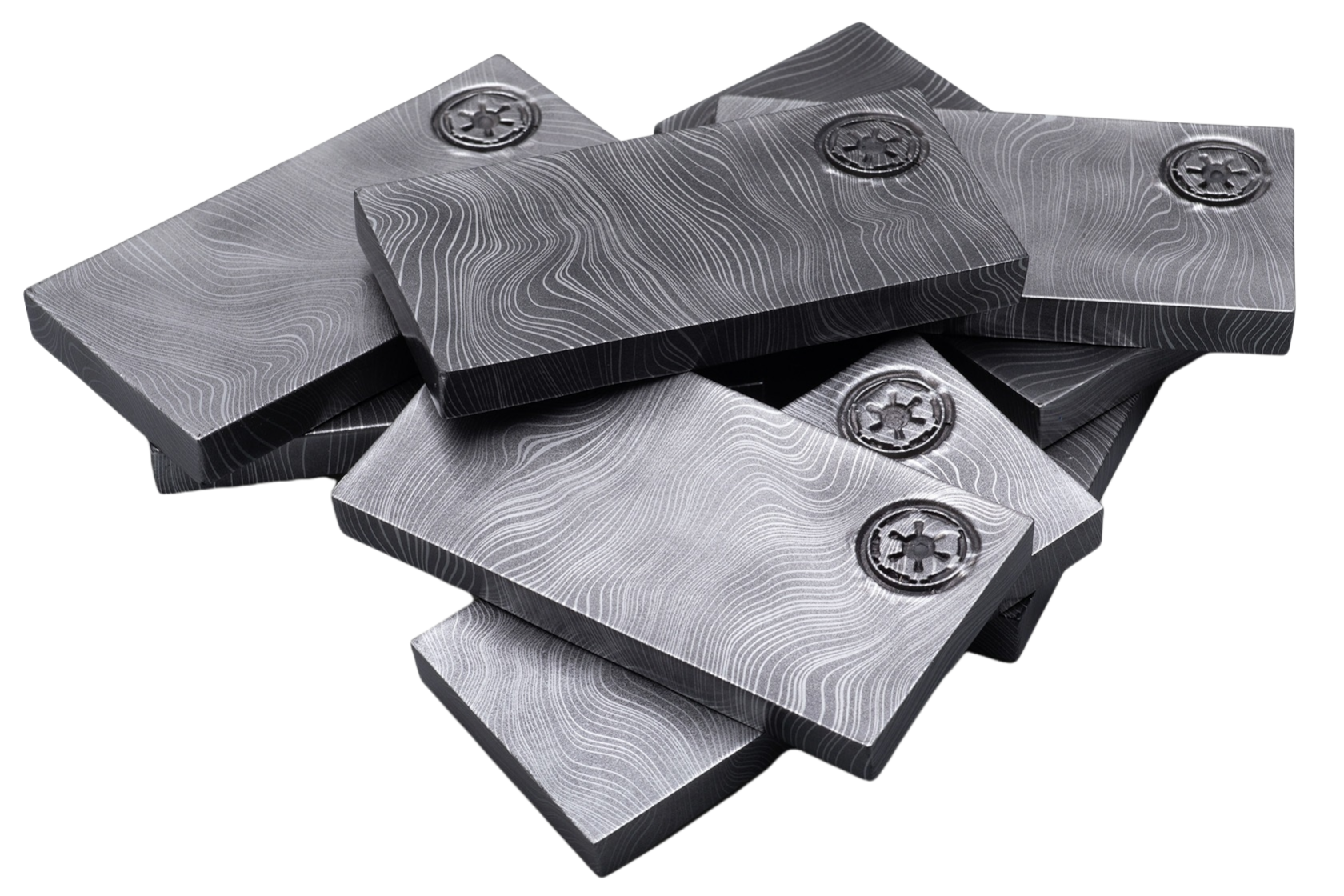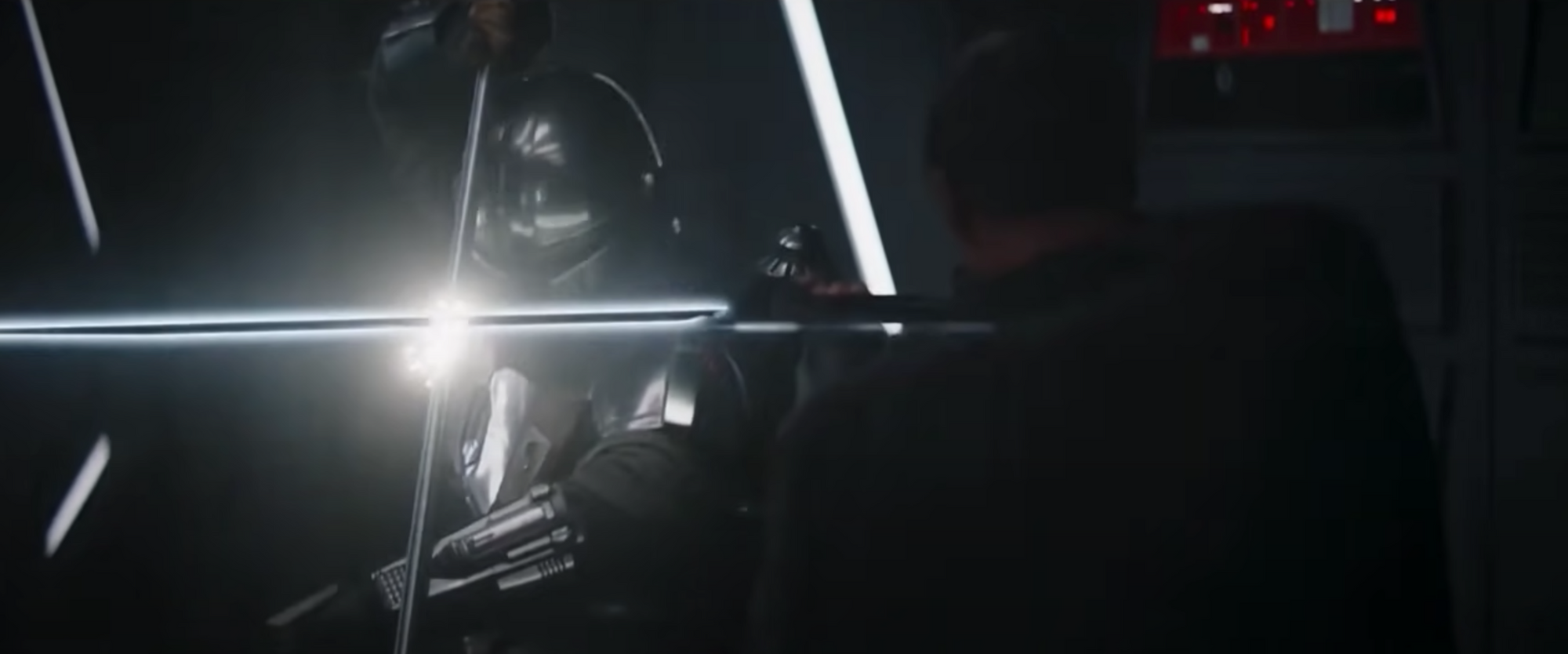What is Beskar really made of?

The recent Mandalorian spin-off show The Book of Boba Fett offered yet more evidence that Beskar, the mysterious metal Mandalorian warriors use to forge their armor, is truly incredible stuff. From Din Djarin’s exploits in The Mandalorian, we already knew that Beskar can withstand phaser blasts and lightsaber strikes. As Boba Fett’s trials at Tatooine’s Pit of Carkoon reveal, it can also handle the digestive juices of a Sarlacc. Even the Rancor, Star Wars’ most infamous bone-crunching beast, seems to have trouble biting into a Beskar helmet.
But is there any material in our galaxy or a far, far away one with similar laws of physics that’s so resilient to so many forms of space fantasy-induced trauma? After consulting with experts, I have to say I’m skeptical. What's clear is that forging a suit of Beskar armor would require incredible advances in materials science, not to mention some very clever engineering.
On its face, the identity of Beskar is no mystery: According to Wookipedia, the fan-edited encyclopedia of all things Star Wars, it’s a form of steel, the ubiquitous iron and carbon alloy humans invented thousands of years ago. Various expanded universe reference materials tell us that Beskar originates from iron ore mined on Mandalore and its moon Concordia. Carbon is then added to it in the foundry to enhance its strength. Fans of The Mandalorian have suggested Beskar might be a particularly high carbon alloy like Wootz steel, which features a similar striated pattern that comes from repeatedly folding the metal in a forge.
But while shiny, silvery Beskar certainly looks like it could be steel, there’s a problem with that simple explanation. Steel — along with most other metals commonly used on Earth — would be absolutely ravaged by a lightsaber strike. While their exact temperature is a matter of scholarly debate, lightsabers are incredibly powerful weapons that, in all likelihood, run astronomically hot.

While sometimes referred to as “laser swords,” in the Star Wars canon lightsabers are made of plasma, a soupy mix of atomic nuclei and electrons that forms when gases get so hot their atoms are violently ripped apart. If lightsabers are plasma, then we’re likely talking about weapons with a temperature “in the thousands to hundreds of thousands of Kelvin,” said Patrick Johnson, an associate professor in Georgetown University’s physics department and the author of The Physics of Star Wars. Astrophysics enthusiast Brandon Weigel did some calculations based on the scene in The Last Jedi where Rey slices an entire cliffside off of Ahch-To and determined that the lightsaber she used was burning at approximately 20,300 degrees Celsius — nearly four times as hot as the surface of the Sun.
If there’s a metal that can handle brief contact with an object hotter than our nearest star, it’s probably not carbon steel. “When we talk about high-temperature metals, carbon steels are kind of the lowest class,” said Avi Shultz, a program manager at the Department of Energy’s Solar Energy Technologies Office. These steels can only handle temperatures of up to about 400 degrees Celsius before they begin degrading. Certain stainless steels can handle a toastier 700 degrees, while some nickel-based alloys can be pushed closer to 800 degrees.
These heat-resistant metals have many applications on Earth, from carrying hot, high-pressure fluids inside concentrated solar-thermal power plants to fortifying hypersonic aircraft. Still, if you were planning on getting poked repeatedly with a plasma sword running upwards of 20,000 degrees, you’d probably want something that can withstand even more heat.
Your best option may be an alloy made of so-called refractory metals like tungsten or molybdenum. Over the long term, these alloys can comfortably withstand temperatures of around 1,500 to 1,600 degrees Celsius, says Mark Messner, a principal mechanical engineer in the Applied Materials Division at Argonne National Laboratory. But there are some practical challenges to actually working with them that Mandalorian forge masters would need to overcome.
Perhaps the most basic problem is that when a material is incredibly resistant to heat “it becomes really hard to shape it into anything,” Messner said. Scientists on Earth, he added, can’t really forge refractory alloys at all because of the heat requirements. “So we have to do all sorts of clever, complicated, and expensive processing techniques to make them.”
Another issue is that materials capable of handling very high temperatures tend to be brittle at lower temperatures. But we don’t see Beskar armor shatter — or even fracture — when it’s struck with blunt objects or pressed between Rancor teeth. And finally, refractory alloys start to oxidize at very high temperatures, meaning even if a tungsten suit could withstand a lightsaber jab or two, it'd show signs of the encounter.
“Din’s armor clearly isn’t made from one of our refractory alloys — it seems to be just as shiny after he gets hit with a blaster or lightsaber,” Messner said.

Even if Beskar is made of an exotic refractory alloy that Mandalorian scientists have engineered to be ductile at lower temperatures and resistant to oxidation, it’s still hard to imagine that metal showing no signs of its encounters with kyber crystal-powered plasma beams after years or decades of use. Both Messner and Shultz agreed that Mandalorian armor would probably need some additional features to help keep it cool.
Fusion research has shown us that ultra-hot plasmas can be magnetically confined, so one possibility would be to infuse the armor with some sort of magnetic barrier that prevents lightsabers from ever making contact with it on a microscopic level. Another option would be to equip the armor with an active cooling system that uses a circulating fluid to siphon away excess heat before it can wreak havoc.
Finally, and perhaps most speculatively, Beskar armor might be cooled off by applying a special coating to the top surface that radiates heat energy away as light. Shultz says there’s been a lot of promising research on using this technique to help passively cool buildings and that it’s “theoretically possible” to design a radiative cooling system that works for high-temperature metal applications as well. However, he cautions that the two applications are very different and the latter hasn’t been explored in depth — not by scientists on Earth, at least.
Clearly, we still have a lot of open questions about how Beskar is able to do everything we see in Star Wars. And we’re unlikely to get any firm answers without more glimpses of the armor in action. But one thing that's certain is that Beskar's inventors deserve major respect for forging a metal that's light years ahead of anything we can make on Earth today.
To be fair, if our scientists and engineers had Jedi Masters assisting them, we might be capable of such metallurgical marvels, too.